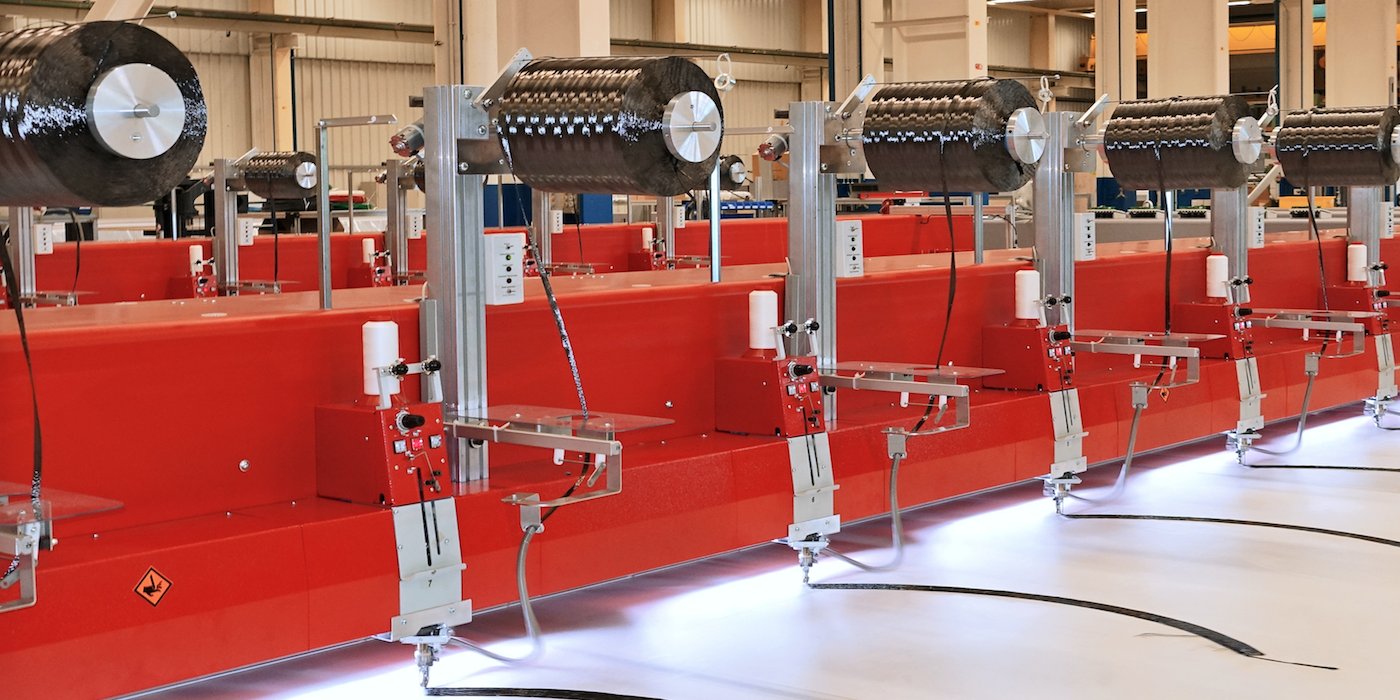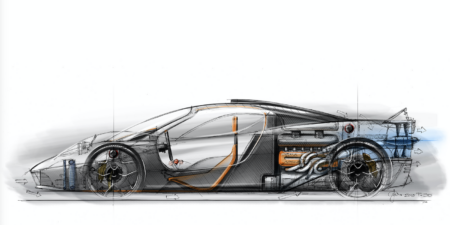Textile engineering specialist, ZSK, has developed novel carbon composite manufacturing techniques, which the German company believes will overcome the cost and productivity challenges that have held back more widespread use of the material. The company’s latest Tailored Fiber Placement (TFP) process is claimed to “dramatically” cut cost, wastage and manufacturing times for automotive components such as suspension parts, while offering new possibilities for improving component design, and enhancing end-of-life recyclability.
The conventional approach to fiber placement is to weave the fibers of a composite into a perpendicular arrangement and then cut the fabric to the required shape. However, ZSK’s TFP process arranges the functional fibers in bundles exactly where they are most needed for structural performance and stitches them into position on a compatible base layer. According to the company this method affords greater freedom of positioning, allowing fibers to be placed in the optimum directions to carry the loads, while also ensuring that they do not move during processing, and reducing fiber wastage to just 3% instead of the usual 30-70% on a typical automotive component. ZSK says that its machines are able use TFP to create 3D pre-forms which match the finished shape of a typical automotive part.
“The demand for lightweight materials, to improve CO2 emissions and product performance as vehicles become heavier and more complex, has never been greater, but the cost of composite manufacture has remained unaffordable in all but the most specialist niche applications,” explained Melanie Hoerr, manager for technical embroidery at ZSK. “Our approach using TFP breaks through that barrier by eliminating most of the manual processing and waste of conventional composite manufacture, while increasing design freedom and improving quality control.”
Process improvements for the new TFP method include fast fiber laying, which reduces stitching time; a fiber supply unit which doubles the deposition rate and allows simultaneous deposition of different fibers; automatic switching between different materials; a pneumatic cutting system for automated cutting of wires and fibers; and advanced design code that ensures accurate repetition of results, even controlling zig-zag stitching automatically.
TFP allows the composite pre-form to be produced with a mix of fibers, such as optical or metallic materials, to provide specific properties such as electrical continuity or impedance.
According to the company, naked antenna wires and isolated feed wires have already been combined by this method to make up RFID components.

TFP can also incorporate polymers commingled with carbon fiber to be melted later during molding to form the matrix, avoiding the need for a resin filler, accelerating the production of complex parts and improving the resin-to-fiber distribution, especially in the extremities of the mold. Current difficulties with end-of-life recycling of composites could be largely overcome by choosing appropriate polymers for re-melting to simplify separation during end of life recycling.





